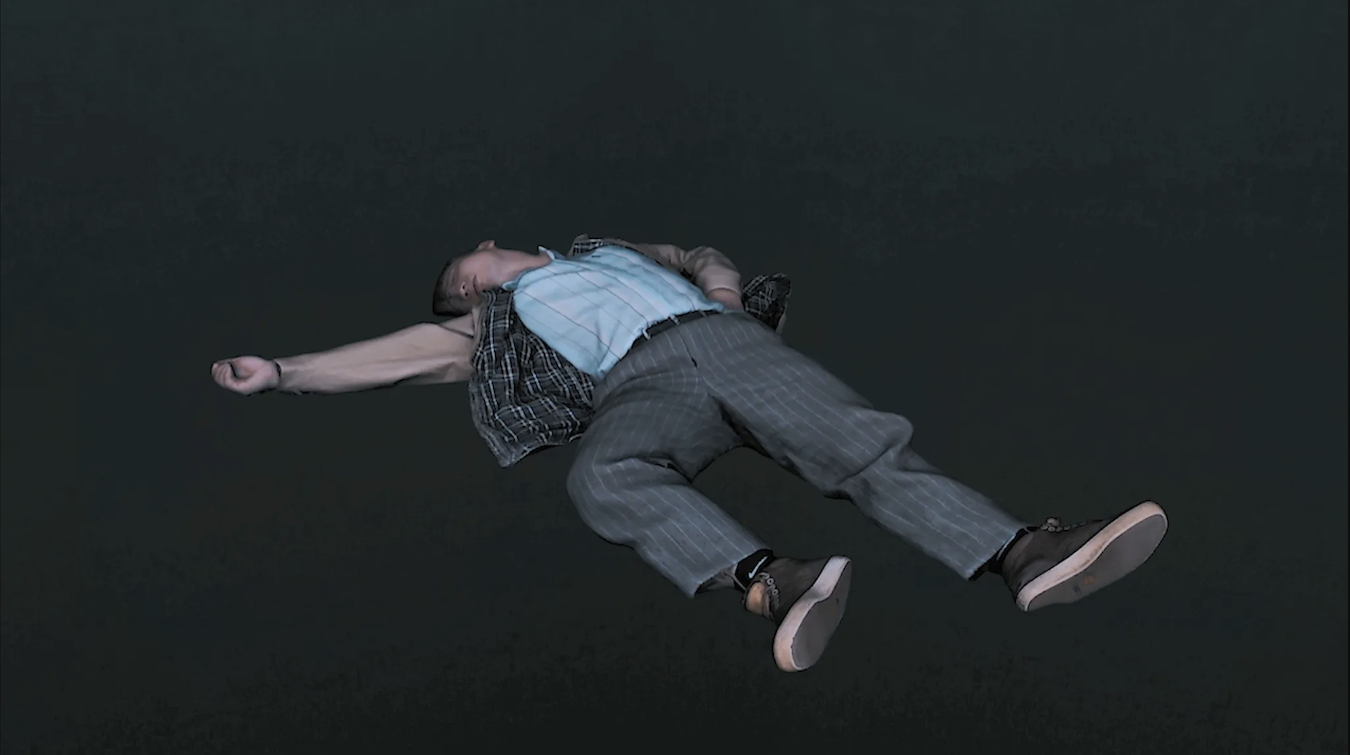by Brian Hioe
語言:
English
Photo Credit: The Making of Crime Scenes
This is a No Man is an Island film review written in collaboration with Cinema Escapist, as part of coverage of the International Film Festival Rotterdam. Keep an eye out for more!
“THE MAKING OF CRIME SCENES” follows many of Hsu Che-yu’s usual concerns, in integrating oral history with CGI animation and live-action reenactment.
In this sense, “The Making of Crime Scenes” can be situated alongside prevailing trends in Taiwanese documentaries, which often integrate some aspects of art film or video art rather than sticking only to a mimetic narrative. However, with this work, Hsu sets his sights on heady territory, by zooming in on the murder of Taiwanese American author Henry Liu in 1984.
Hsu’s work begins with a CGI depiction of Liu’s corpse, detailing the process of Liu’s assassination through an extensive interview with film director and Bamboo Union gangster Wu Tun. Narration from Wu continues throughout the film.
It is Hsu’s credit that he is able to integrate a fascinating and strange interview into the story in this way. Though the film is not specifically about Wu, Wu’s life story cannot help but color much of the narrative, given his experiences as both a gangster, political assassin, and film director.

Film still
Given that “The Making of Crimes Scenes” is, of course, itself a film, this also vests it with a somewhat metafictional lens. Wu comes off as still rather proud of his actions, while also discussing the bind that he and Liu’s other killers found themselves in when confronted with an FBI investigation.
“The Making of Crime Scenes” can be disjointed, but it makes up for this with the dizzying array of elements it incorporates. Besides just CGI, one also sees wuxia wire choreography, historical sets built to resemble the garage when Liu was murdered, or places from Wu’s memories. This can be somewhat scattershot, in line with Wu’s rather meandering, sometimes somewhat stream-of-consciousness recollections. Yet even so, this is Hsu’s deliberate choice of style, and all of these elements are technically well-executed.
“The Making of Crime Scenes” may not be for everybody, as not all viewers will feel that the disparate visual elements add to Wu’s recollections. But, as with much of Hsu’s work in a similar vein, it still provides an intriguing glimpse into a period in Taiwanese history, if not specifically into Henry Liu’s murder.



